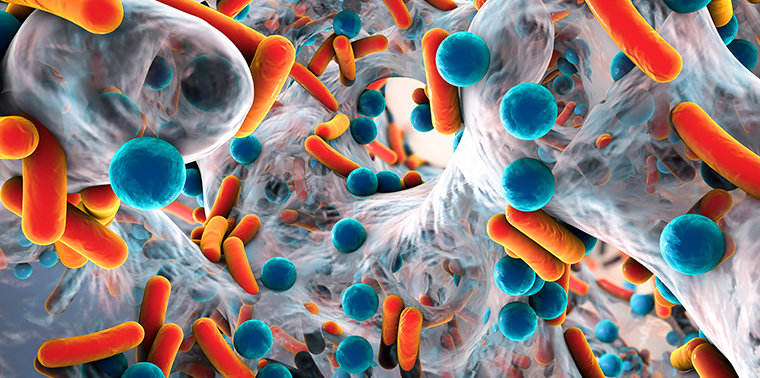September 1, 2017 — Planet of the insects? Heck no. Planet of the microbes.
Science has long struggled with estimating how many species of living things inhabit our planet. We’ve named some 1.5 million of them, but we know there are vastly more. Highly educated guesses of late have ranged from 2 million to 1 trillion, with most in the range of 11 million or fewer.
Now, using DNA analyses that increase the expected number of insect and closely related species to around 40 million, and factoring in the abundant microorganisms that live on or in them, a research team from the University of Arizona has come up with a new estimate: at least 1–6 billion.
The study, published in the September Quarterly Review of Biology, differs from previous calculations in three ways. First, it includes all major groups of organisms, not just the ones we can see. Second, it uses molecular analyses to distinguish between species that look alike. And third, it focuses on organisms that live in and on insects, itself an amazingly diverse group.

Relative abundance of different types of organisms based on known species (left), previously projected richness (center), and the current study. Courtesy of Brendan B. Larsen, Elizabeth C. Miller, Matthew K. Rhodes and John J. Wiens
The results, though still quite speculative, dramatically alter our understanding of how life is sliced and diced among different forms. Where insects were once considered by far the most abundant, in the new depiction of what the authors call “The Pie of Life” they are relegated to just part of the tiny wedge allotted to animals, while bacteria and other microorganisms make up the vast bulk — 70 to 90 percent — of the picture.
Improved awareness of species diversity provides a valuable foundation for efforts to understand and maintain the integrity of natural systems. The authors note, for instance, that in addition to dramatically expanding and refining our best estimate of the number of species on Earth, the analysis suggests that organisms that live with or in other organisms are the source of most of life’s diversity.
And, we might add, that 19th century mathematician Augustus de Morgan was onto something when he penned this memorable verse:
Great fleas have little fleas upon their backs to bite ’em,
And little fleas have lesser fleas, and so ad infinitum.
![]()
Ensia shares solutions-focused stories free of charge through our online magazine and partner media. That means audiences around the world have ready access to stories that can — and do — help them shape a better future. If you value our work, please show your support today.
Yes, I'll support Ensia!
